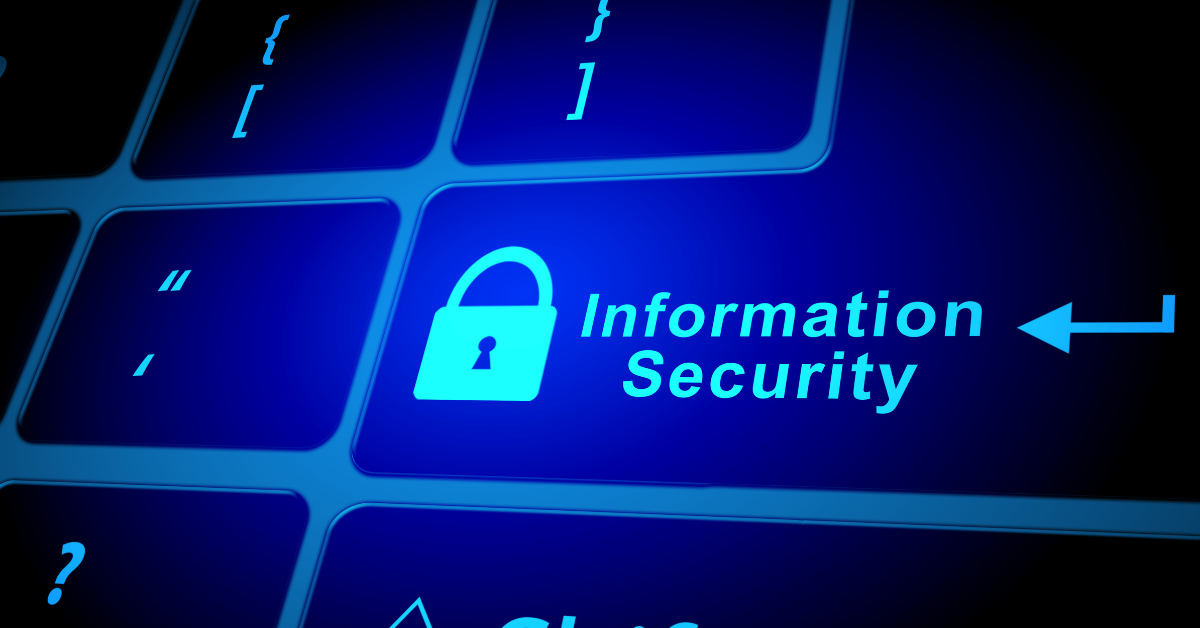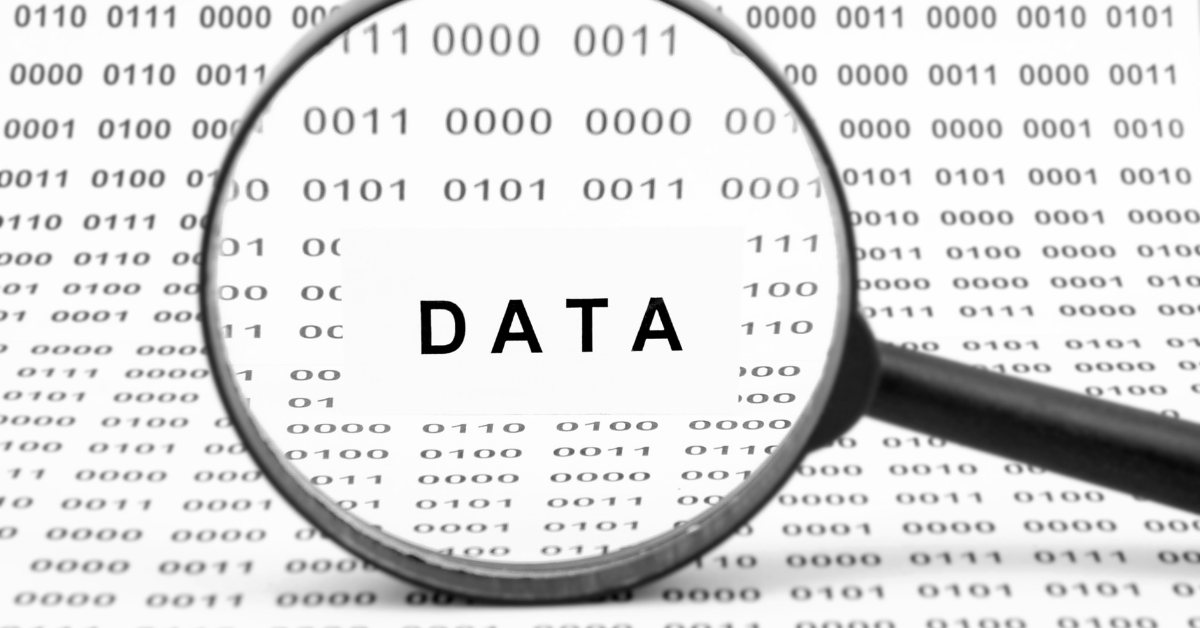The relationship between information securThe Regular Data Backupity and data availability is intertwined. Information security measures are crucial for maintaining high levels of data availability. By implementing robust security controls, such as access controls, encryption, and intrusion detection systems, organizations can protect sensitive data from unauthorized access and ensure its availability to authorized users. Security breaches and incidents can compromise data availability, making it inaccessible or disrupting its usability. Therefore, information security plays a vital role in safeguarding data availability and ensuring uninterrupted access to critical information.
In today’s digital age, information security, and data availability are two crucial aspects that organizations must consider to protect their valuable information and ensure uninterrupted access. Understanding the relationship between these two concepts is essential for businesses to develop effective strategies prioritizing security and availability.
Understanding Information Security

Before delving into the relationship between information security and data availability, it is important to understand what information security entails.
Definition of Information Security
Information security refers to the practice of protecting sensitive information from unauthorized access, disclosure, disruption, modification, or destruction while ensuring its confidentiality, integrity, and availability.
Importance of Information Security
Information security plays a critical role in safeguarding organizations’ data assets and protecting them from various threats, such as cyberattacks, data breaches, and insider threats. By implementing robust security measures, businesses can mitigate risks and maintain the trust and confidence of their customers, partners, and stakeholders.
Key Elements of Information Security
Information security encompasses several key elements, including risk assessment and management, access control, encryption, incident response, and security awareness training. These elements combine to create a comprehensive security framework that safeguards sensitive information and systems.
Risk Assessment and Management
Risk assessment and management are crucial components of information security. Organizations need to identify potential risks and vulnerabilities that may compromise their information assets’ confidentiality, integrity, and availability. This involves conducting thorough assessments to evaluate the likelihood and impact of various threats. By understanding the risks, organizations can develop strategies to mitigate them effectively.
Access Control
Access control is another vital aspect of information security. It involves implementing mechanisms to control and manage user access to information systems and resources. This includes authentication, authorization, and accountability measures to ensure that only authorized individuals can access sensitive data. Access control helps prevent unauthorized access, data breaches, and insider threats.
Encryption
Encryption is a fundamental technique to protect sensitive information from unauthorized access. It involves encoding data in such a way that it can only be deciphered with the use of a decryption key. By encrypting data, even if it falls into the wrong hands, it remains unreadable and unusable. This provides an additional layer of security and helps maintain the confidentiality of sensitive information.
Incident Response
Incident response is an essential element of information security. It involves establishing effective procedures and protocols to handle and respond to security incidents. This includes detecting, analyzing, and mitigating security breaches and recovering from any damages caused. Incident response plans ensure that organizations can respond swiftly and efficiently to minimize the impact of security incidents and restore normal operations.
Security Awareness Training

Security awareness training is crucial for promoting an organization’s security culture. It involves educating employees about security best practices, policies, and procedures. Increasing awareness and knowledge makes employees more vigilant and better equipped to identify and respond to potential security threats. Security awareness training helps defend against social engineering attacks, phishing attempts, and other security risks.
Organizations can develop comprehensive strategies to protect their sensitive information and maintain data availability by understanding the various elements of information security. Implementing robust security measures, conducting regular risk assessments, and providing continuous security awareness training are essential to ensure information assets’ confidentiality, integrity, and availability.
Exploring Data Availability

Data Availability: Ensuring Accessible and Usable Data
Data availability focuses on ensuring that data is accessible and usable whenever and wherever it is needed. In today’s data-driven world, organizations heavily rely on timely access to data for informed decision-making and operational efficiency.
Defining Data Availability
Data availability refers to the accessibility and usability of data at all times. It involves the implementation of infrastructure, policies, and procedures that enable uninterrupted access to data, minimizing downtime and ensuring business continuity.
The Importance of Data Availability
Data availability plays a crucial role in businesses as it enables employees to retrieve critical information, collaborate on projects, and deliver products and services without interruptions. Imagine a scenario where a customer service representative cannot access customer data due to a system failure. This would not only frustrate customers but also hinder the representative’s ability to provide efficient and personalized support.
Robust Backup and Recovery Systems
One key aspect of data availability is the implementation of robust backup and recovery systems. These systems create redundant copies of data, allowing organizations to quickly restore data in case of hardware or software failures. By storing multiple copies of data in different locations, businesses can mitigate the risk of data loss and ensure that critical information remains accessible.
Enhancing Productivity and Efficiency
By ensuring data availability, businesses can minimize costly downtime and maintain high productivity levels. For example, in the manufacturing industry, timely access to production data is essential for optimizing processes and identifying bottlenecks. If data availability is compromised, organizations may experience production delays, leading to missed deadlines and decreased customer satisfaction.
Proactive Measures for Data Availability
Several factors can impact data availability, and organizations must proactively identify and address these factors to minimize potential disruptions. Unexpected hardware or software failures can result in temporary or permanent loss of data access. Power outages can also pose a significant threat, especially if backup power systems are not in place.
Safeguarding Data Availability
Natural disasters, such as earthquakes, floods, or fires, can cause physical damage to data centers, rendering data inaccessible. To mitigate such risks, organizations must have robust disaster recovery plans in place to quickly recover and restore data. Additionally, malicious attacks, such as hacking or ransomware, can compromise data availability by encrypting or stealing sensitive information. Implementing strong cybersecurity measures and regularly updating security protocols is crucial to safeguarding data availability.
Prioritizing Data Availability
Data availability is a critical aspect in today’s data-driven world. Organizations need to implement infrastructure, policies, and procedures that ensure uninterrupted access to data. By proactively addressing factors that can impact data availability and protecting critical information, businesses can maintain operational efficiency, make informed decisions, and deliver exceptional products and services to customers.
The Relationship of Information Security and Data Availability
The relationship between information security and data availability is interconnected. Effective information security measures are essential to maintain high data availability, as security breaches can compromise the availability of critical data.
How Information Security Affects Data Availability?
Information security measures, such as firewalls, intrusion detection systems, and access controls, protect data from unauthorized access and malicious activities. By preventing security incidents, organizations can ensure that their data remains accessible and available to authorized personnel.
For example, firewalls are a barrier between trusted internal and external networks, filtering incoming and outgoing traffic. This prevents unauthorized access attempts and protects sensitive data from being compromised. Intrusion detection systems monitor network traffic and identify suspicious activities or potential security breaches. These systems enable organizations to respond promptly to threats and prevent them from impacting data availability.
Access controls, conversely, ensure that only authorized individuals have the necessary permissions to access specific data. This prevents unauthorized users from accessing sensitive information and helps maintain data availability by minimizing the risk of accidental or intentional data deletion or modification.
The Balance between Security and Availability
Striking a balance between information security and data availability is crucial. While robust security measures are necessary, they should not hinder legitimate access to data or impede employees’ ability to perform their tasks efficiently. Finding the right balance requires a comprehensive approach that considers both security requirements and operational needs.
Organizations must carefully design security policies and procedures to align with their operational goals. This includes conducting risk assessments to identify potential vulnerabilities and threats, implementing appropriate security controls, and regularly monitoring and updating security measures to adapt to evolving threats. By doing so, organizations can ensure that the security measures do not impede data availability, allowing employees to access and utilize data effectively while maintaining its confidentiality, integrity, and availability.
Case Studies: Security Breaches Impacting Data Availability
Numerous high-profile security breaches have underscored the importance of information security in maintaining data availability. Incidents, such as ransomware attacks or distributed denial-of-service (DDoS) attacks, can cripple organizations’ systems, leading to data unavailability and significant financial losses.
One notable case is the WannaCry ransomware attack that occurred in 2017. This global cyberattack targeted computers running the Microsoft Windows operating system, encrypting data and demanding ransom payments in Bitcoin. The attack affected various organizations, including hospitals, causing disruptions in patient care and compromising critical medical data availability.
Another example is the Mirai botnet attack in 2016, which utilized a network of infected Internet of Things (IoT) devices to launch massive DDoS attacks. These attacks targeted DNS service providers and major websites, resulting in widespread service disruptions and rendering data inaccessible to users.
These case studies highlight the devastating consequences of security breaches on data availability. Organizations must remain vigilant and continually enhance their information security measures to mitigate the risk of such incidents and protect the availability of their data.
Strategies to Enhance Information Security and Data Availability
To strengthen information security and ensure data availability, organizations need to adopt best practices and implement robust strategies. In today’s digital landscape, where cyber threats are becoming increasingly sophisticated, organizations must stay ahead of the curve and protect their valuable information assets.
Best Practices for Information Security
Organizations should conduct regular risk assessments to identify potential vulnerabilities and weaknesses in their systems. By identifying these risks, organizations can proactively implement appropriate security controls to mitigate them. Access controls, such as strong authentication mechanisms and role-based access controls, should be implemented to restrict unauthorized access to sensitive information. Encryption technologies should be employed to protect data both at rest and in transit. Regularly updating and patching software and systems is essential to address known vulnerabilities and ensure the organization’s infrastructure remains secure. Furthermore, employee security awareness training is crucial to ensure a strong security culture within the organization, where employees are educated about the latest threats and best practices to protect sensitive information.
Ensuring Data Availability
Besides information security, organizations must ensure data availability. Data availability refers to the ability to access and retrieve data when needed. To enhance data availability, organizations should implement redundant storage systems. Redundancy ensures that backup systems are in place if one storage system fails to ensure uninterrupted access to data. Establishing backup and recovery mechanisms is also critical. Regularly backing up data to secondary storage devices or off-site locations ensures that data can be restored from backups even if the primary storage system fails.
Additionally, organizations should design resilient infrastructure capable of withstanding potential disruptions, such as power outages or natural disasters. Organizations can minimize the impact of such disruptions on data availability by implementing redundant power supplies, uninterruptible power sources (UPS), and disaster recovery plans. Regular testing and monitoring of data availability measures are also essential to detect and address any issues promptly.
The Role of Backup and Recovery in Data Availability

Backup and recovery strategies are vital in maintaining data availability. Organizations should establish well-defined backup and recovery procedures that align with their business requirements. By regularly backing up data and establishing effective recovery mechanisms, organizations can quickly restore data in the event of a system failure, minimizing downtime and ensuring continuity in operations. The frequency of backups should be determined based on the criticality of the data and the rate of change within the organization. Organizations may opt for real-time or near-real-time replication for highly critical data to ensure minimal data loss. It is also essential to regularly test the backup and recovery processes to ensure their effectiveness and reliability. Organizations can identify gaps or issues in their backup and recovery strategies by conducting periodic recovery drills and addressing them proactively.
In conclusion, enhancing information security and data availability requires a holistic approach encompassing best practices for information security, robust data availability strategies, and well-defined backup and recovery procedures. By prioritizing these aspects and continuously evaluating and improving their security and availability measures, organizations can protect their valuable information assets and ensure seamless access to data when needed.
Key Takeaways
- Information security protects sensitive data from unauthorized access while ensuring its confidentiality, integrity, and availability.
- Key elements of information security include risk assessment, access control, encryption, incident response, and security awareness training.
- Data availability focuses on ensuring uninterrupted access to data when needed.
- Strategies to enhance information security include conducting risk assessments, implementing access controls and encryption, regularly updating software, and providing security awareness training.
- Strategies to ensure data availability involve implementing redundant storage systems, establishing backup and recovery procedures, designing resilient infrastructure, and regularly testing and monitoring data availability measures.
FAQs
What are the potential conflicts between information security and data availability?
Conflicts may arise when stringent security measures impede timely access to data, affecting business operations or user productivity. Striking a balance between security and availability is crucial to maintain data protection while enabling efficient and uninterrupted access for authorized individuals.
How can organizations ensure both information security and data availability?
Organizations have the ability to implement strong security measures, including firewalls, intrusion detection systems, and encryption, in order to safeguard data from unauthorized access. Simultaneously, they should employ redundancy, backups, and disaster recovery plans to ensure data availability in case of system failures or cyber incidents. Regular testing and monitoring are essential to maintain the delicate equilibrium between security and availability.
Conclusion
The relationship between information security and data availability is inseparable. Effective information security measures are critical to safeguarding data and ensuring its availability to authorized users. Addressing potential security threats while implementing strategies to enhance data availability helps organizations maintain operational efficiency, protect their assets, and build trust with their stakeholders. By prioritizing information security and data availability, businesses can achieve a robust and resilient infrastructure supporting their growth and success in the digital age.
